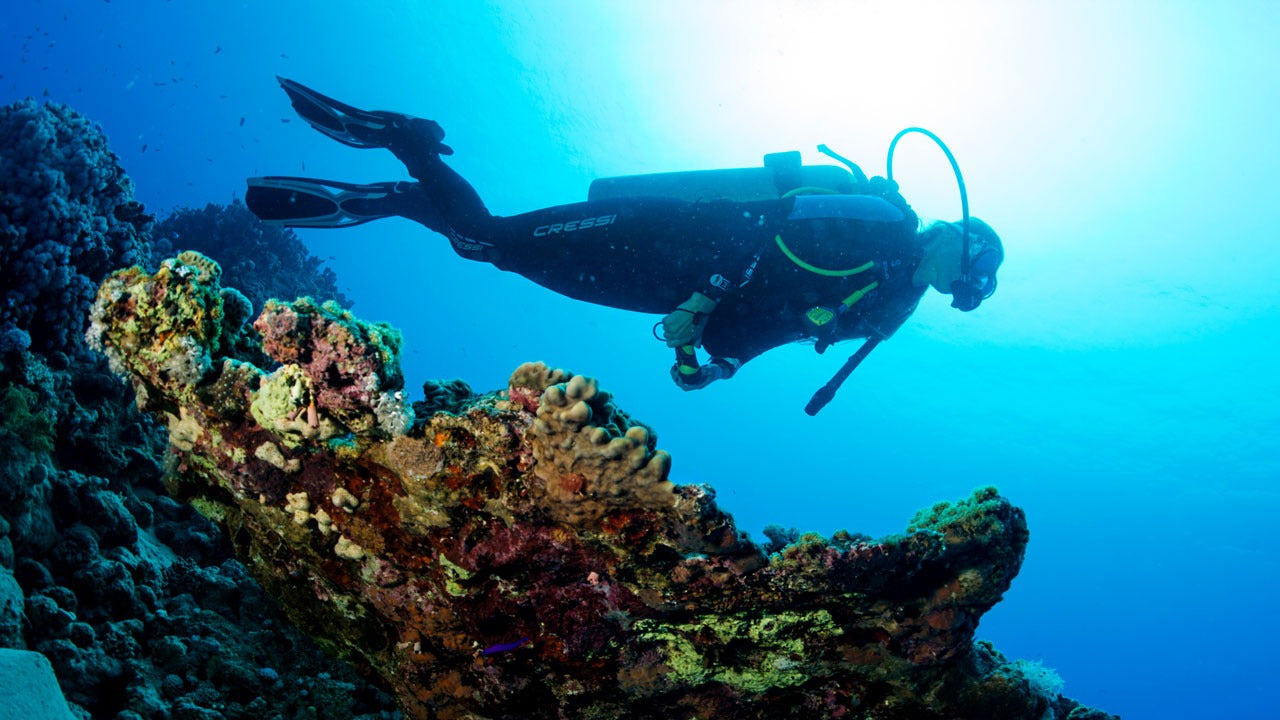Divers Digest of This Spring

The spring is almost behind us, but before we jump into the fun summer season, let’s take a moment to look back at some of the most exciting diving-related news from the past three months.
In this digest we’ll recall:
- A shark sanctuary in Samoa;
- Two new marine species discovered;
- A new Guinness World Record for the longest dive in cold water;
- Two freediving records;
- A short film with underwater choreography by Julie Gautier;
Let’s begin our digest with some good news from the field of marine conservation.
In early March, the Prime Minister of Samoa Tuilaepa Aiono Sailele Malielegaoi announced that the island nation is declaring its waters a shark sanctuary. The new regulations ban commercial fishing, as well as the possession, trade, and sale of sharks and shark products throughout Samoa’s 128,000-square-kilometer (49,421-square-mile) exclusive economic zone. Fishing gear, such as wire leaders, typically used to target sharks is also prohibited.
The decision to create this shark sanctuary, which, by the way, is the 17th such sanctuary in the world, is an important step in shark conservation since the waters around Samoa are home to nearly 30 species of sharks and rays.
Speaking about sharks, a new species of shark has been discovered in the Atlantic Ocean. Sixgill sharks have long been separated into two distinct species: The Bluntnose Sixgill shark, which lives over 8,000 feet below the surface and the Bigeye Sixgill shark, which inhabits most of the major oceans. However, the Atlantic species of Bigeye Sixgill has just now been declared its own species. The new species’ scientific name is Hexanchus vitulus.
There also seems to be a new member in the manta ray family. Drone footage shot off Palm Beach, Florida by photographer Ivy Yin of Our Children’s Earth Foundation shows what looks like a new species of manta ray. Yin sent the footage to Dr. Andrea Marshall, co-founder of the Marine Megafauna Foundation, and a scientist who studies manta rays off the Florida coast. Not only does she believe this to be a new species of manta ray, but also that the coast of Florida around Palm Beach could serve as a nursery for this species.
Moving on, it’s impossible to omin the new world record for the longest open water dive in cold water, set by a Turkish diver Cem Karabay.
The old cold water endurance record held by Norwegian Nils-Roar Selnes, which stood at 15 hours and 10 minutes, was well beaten when Karabay doubled it, hitting 30 hours and 20 minutes on Tuesday April 24, 2018.
The event was held in the Aegean Sea at the Gokceada Island Marine Park at a depth of 6m/18ft, and was witnessed by a representative from the Guinness Book of World Records.
It is worth noting that this is not the first Guinness World Record set by Cem Karabay. In 2011 he set the world record for the longest dive in a controlled environment, which lasted 192 hours, 19 minutes and 19 seconds, and in 2016 Karabay smashed the record for the longest open-water scuba dive by staying under for 142 hours, 42 minutes and 42 seconds.
The spring season has also brought us two mind-blowing freediving records.
An Italian freediver Alessia Zecchini has set a new World Record of 105m in Constant Weight (CWT) during the Nirvana Oceanquest Freediving Competition. The record was set under AIDA International rules. It extended the previous world record of 104m, also held by Zecchini, who set it during the Vertical Blue competition in 2017.
A Polish freediver Magdalena Solich-Talanda has become the first woman in competitive history to hit 200m in Dynamic No Fins (DNF). The record was set during the Mazovia MiniComp 2018, and whilst this is only a National Record due to the level of judges at the event, this performance beats the current World Record that Solich-Talanda herself set at 191m in July 2017.
Another incredibly talented freediver and underwater filmmaker Julie Gautier has released an incredibly beautiful short film called AMA. The work follows Gautier through several uninterrupted minutes of underwater choreography, gracefully performed in the world’s deepest pool near Venice, Italy.
The piece is titled after the Japanese word for “woman of the sea,” which is also the name for Japan’s traditional shell collectors. The short film premiered in more than 40 public screenings around the world on International Women’s Day (March 8th 2018), and is a metaphoric nod to these united women, while also representing the relationship that connects women from all over the world. As the artist herself explains, “For me, this film is a way to say: you are not alone.”
Last but definitely not least, we have an exciting piece of news for the tech junkies out there - Shearwater has just unveiled its first dive watch - the Teric.
The device is a compact, yet feature-rich unit. It comes with full color AMOLED display, that is easy to read even in adverse conditions. Like all other Shearwater dive computers, the Teric is a multigas trimix dive computer that can be used for Open-Circuit and Closed Circuit diving with a fixed ppO2. In addition to that, it has an all new Freediving mode with programmable sampling/ logging rates, configurable haptic and audible alarms and improved ascent and descent indicators.
As with the Perdix AI and the NERD 2 dive computers, the Teric can connect with up to two wireless tank pressure transmitters. Additionally, it comes with a tilt-compensated 3D compass. The Teric has a rechargeable battery and includes a wireless inductive charger.
The Teric retails for CAD$1399/~US$1075, and the transmitter for CAD$450/~US$346.

In case you have missed some of those, here are the most popular articles of this spring from our blog. Enjoy!




